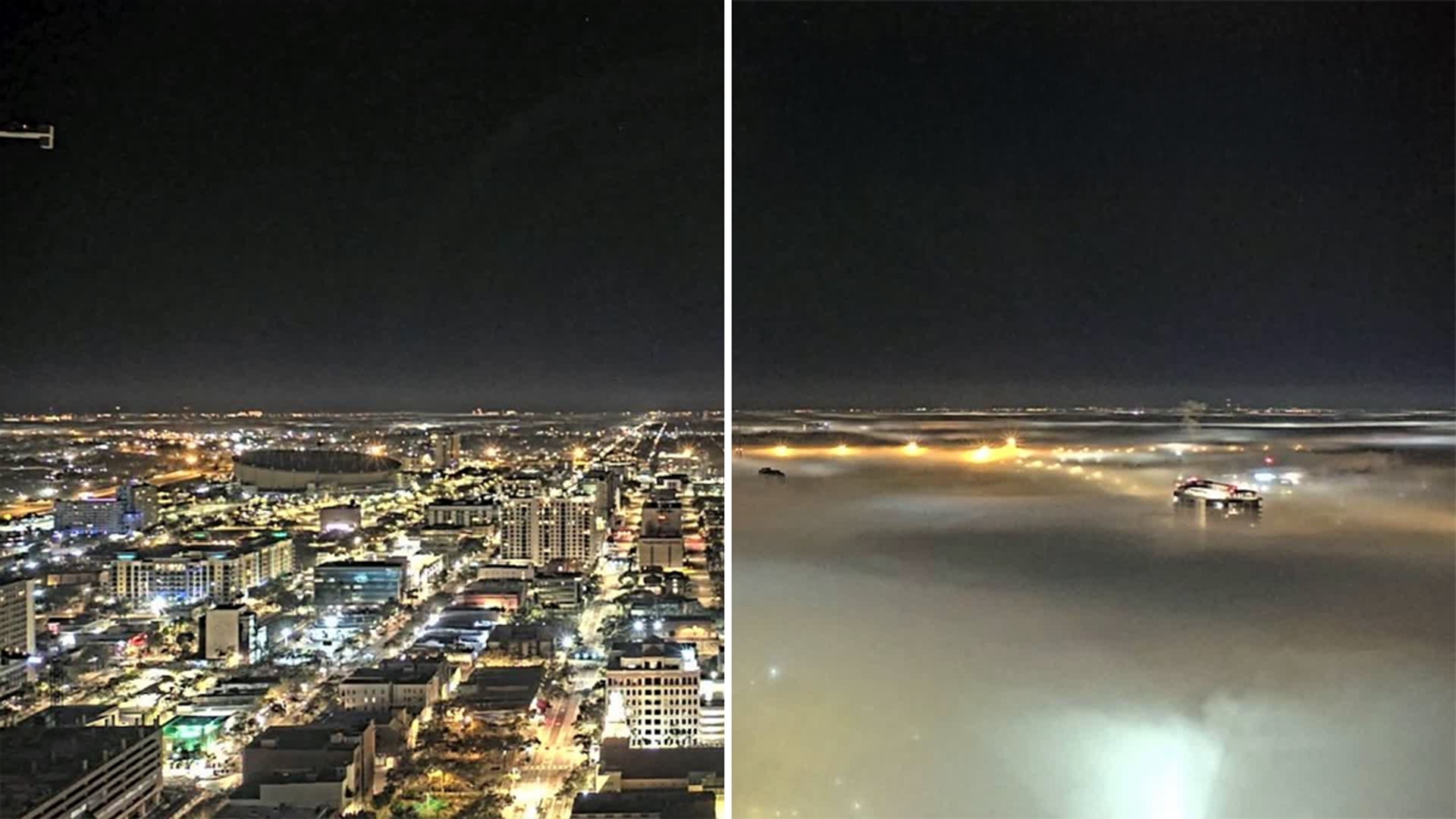ST. PETERSBURG, Fla. — What is causing all this fog Wednesday morning across the Tampa Bay area?
We have the humidity over cool waters and land to thank. While it may be neat to look at, it can be dangerous while driving or boating. Land fog usually lasts until the late morning, but there is also sea fog that can hang around longer into the day.
Land fog, also known as radiation fog, is a little different from sea fog.
Advection fog forms as warmer, more humid air moves over colder ground. The air is cooled to saturation by the cold from the ground below.
In Florida, advection fog occurs when warm, moist air off the Gulf of Mexico or the Atlantic moves (or "advects") over the cooler land surface. This happens occasionally during the spring when maritime air is gradually warming, but air over the land is still influenced by periodic cold fronts.
Radiation fog is a very common type of fog throughout the United States. It is most prevalent during the fall and winter, usually under clear skies with cool nights. It forms overnight as the air near the ground cools. When this cooling causes the air to reach saturation, fog will form.
The fog first forms near the surface, thickening as the air continues to cool. The layer of fog will also deepen overnight as the air above the initial fog layer also cools. As this air cools, the fog will extend upward.
Valleys are often a favorable area for radiation fog because it cools faster and there is less wind to disrupt the fog. Radiation fog is also usually patchy, tends to stay in one place and goes away fairly quickly the next day as the ground starts to warm.
Sea fog (and lake fog) is fog that forms over water when warm, humid air flows over relatively colder waters. One reason fog is so common in San Francisco is because the water is consistently colder than the nearby land.
Around Tampa Bay, we typically experience sea fog in winter when the Gulf of Mexico is at its coldest and a humid weather pattern develops. Once sea fog develops, it can move into land areas and result in hazards to motorists.
Since we had so much fog the NWS put us under and advisory but what does that mean?
A Dense Fog Advisory is issued by the National Weather Service when widespread dense fog develops. When this happens, visibilities frequently drop to one-quarter of a mile or less. When fog develops over land, it’s typically advection fog or radiation fog.

